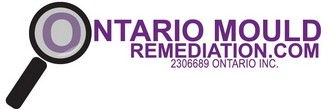When it comes to cleaning mold, there is a lot that you should know, how to approach the mold, what to wear, what tools to use and so much more. Hopefully these tips help you in your fight against fungi. For serious mold contamination, please contact a certified mold specialist. Your health is more important than the small costs involved with hiring a professional.
In a patch of mold measuring 12” x 12” there are 144 MILLION to 1.44 BILLION spores waiting to be set free and sent off into the air. If the DIY’er is not adequately protected, they puts themselves at risk of inhaling tens of millions of spores every time they take a breath.
What to Wear
A full face respirator with HEPA rated cartridges are required to prevent inhalation into the lungs, absorption into the mucous linings of the eyes and face and accidental ingestion when touching the mold and/or moldy surfaces. If you do not have access to this type of respirator, please wear a basic breathing mask. Never approach mold with nothing to cover your mouth, nose and eyes.
A full body Tyvek suit with hood, gloves and foot covers are also required for the same reasons as above. Again though, is you do not have access to this type of suit, then be sure to cover your skin with clothes that you can dispose of later. Do not wear lose clothing either so that the mold spores do not come into contact with your skin. This can result in rashes and other health problems.
Approaching the Area
The area to be cleaned should be “contained” to prevent the rest of the building from being contaminated. Just walking by a patch of mold will send millions of spores into the air. This is the reason why containment before cleaning is so crucial. Failure to properly contain the area could result in other persons in the building getting “sick” or other areas becoming contaminated.
If the area to be cleaned is very large, then “Air Scrubbers” may need to be utilized. Air scrubbers clean the air and remove 99.97% of air borne particles at 0.3 microns.
Cleaning the Contamination
Before you start any cleaning, it is good to know what type of mold you are dealing with. Unfortunately, the type cannot be identified by the naked eye. Color of the mold colony does not leave any definitive answers as to what kind of mold you have. It is important to know what you are up against as certain mold types are very harmful to your health while others are less harmful.
It is never recommended that you clean mold yourself but you can take some measures. Household products such as bleach, borax, vinegar and ammonia can be used to clean mold when they are present on smooth surfaces such as tiles. On porous surfaces such as wood, these products will not work as mold will often be found deep in the pores of the surface. Click the following link for details on how to clean mold using bleach.
After the “cleaning” is completed, it is highly recommended that air sampling be done to ensure that the mold issue is mitigated.
